What Got Me Curious About Floatation Therapy
Floatation therapy has been within my interest radar for quite some time now. Reviews from other chronic illness bloggers kept popping up on my social media feeds, and they were all positive.
Most of these bloggers were caucasian women with fibromyalgia, however. There was even an entire research project dedicated to it called the "Fibromyalgia Floatation Project", which sadly does not exist online anymore. Thus, I wondered if it would have the same effects on someone of Asian ethnicity, who suffers from a different type of pain, namely from Lupus (SLE) and Sjögren's disease.
*Disclaimer: This post was originally sponsored by Palm Avenue Float Club, Singapore, but it has ceased operations. This article is meant for educational purposes, and is based on my personal experiences as a patient. I am not a doctor, and nothing in this article should be substituted for medical advice. Please consult your own doctor before changing or adding any new treatment protocols. This post may also contain affiliate links. It will cost you nothing to click on them. I will get a small referral fee from purchases you make, which helps with the maintenance of this blog. Read our Privacy Policy page for more information. Thank you!
Fibromyalgia vs Lupus and Sjögren's Disease Pain
Fibromyalgia, Lupus and Sjögren's disease can all cause widespread body pain. However, Fibromyalgia tends to cause musculoskeletal pain without inflammation or tissue damage. Whereas Lupus and Sjögren's disease are autoimmune diseases that can lead to inflammation and damage to various organs and body systems (Wolfe et al., 2009).
Pin to Your Floatation Therapy & Chronic Pain Boards:
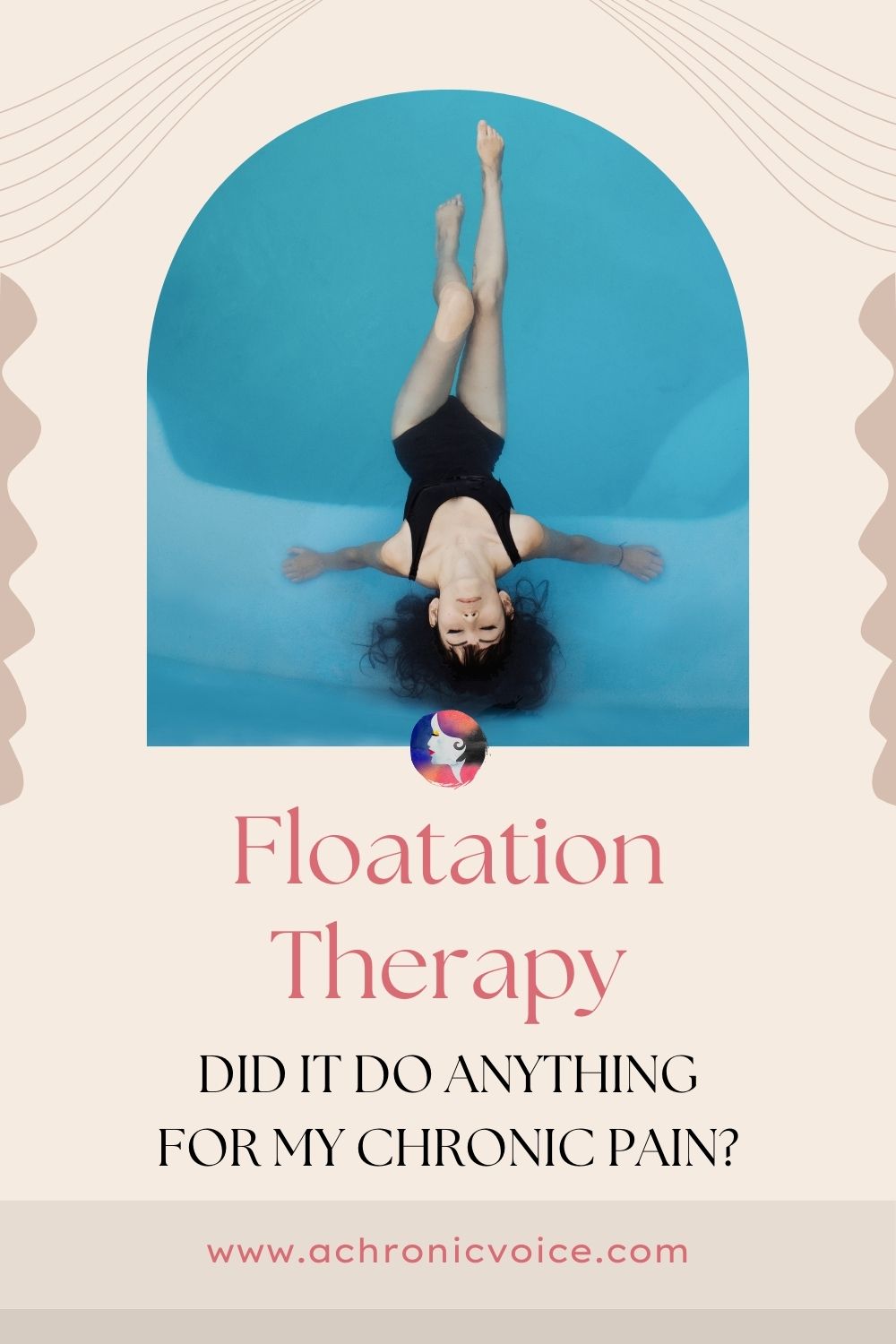
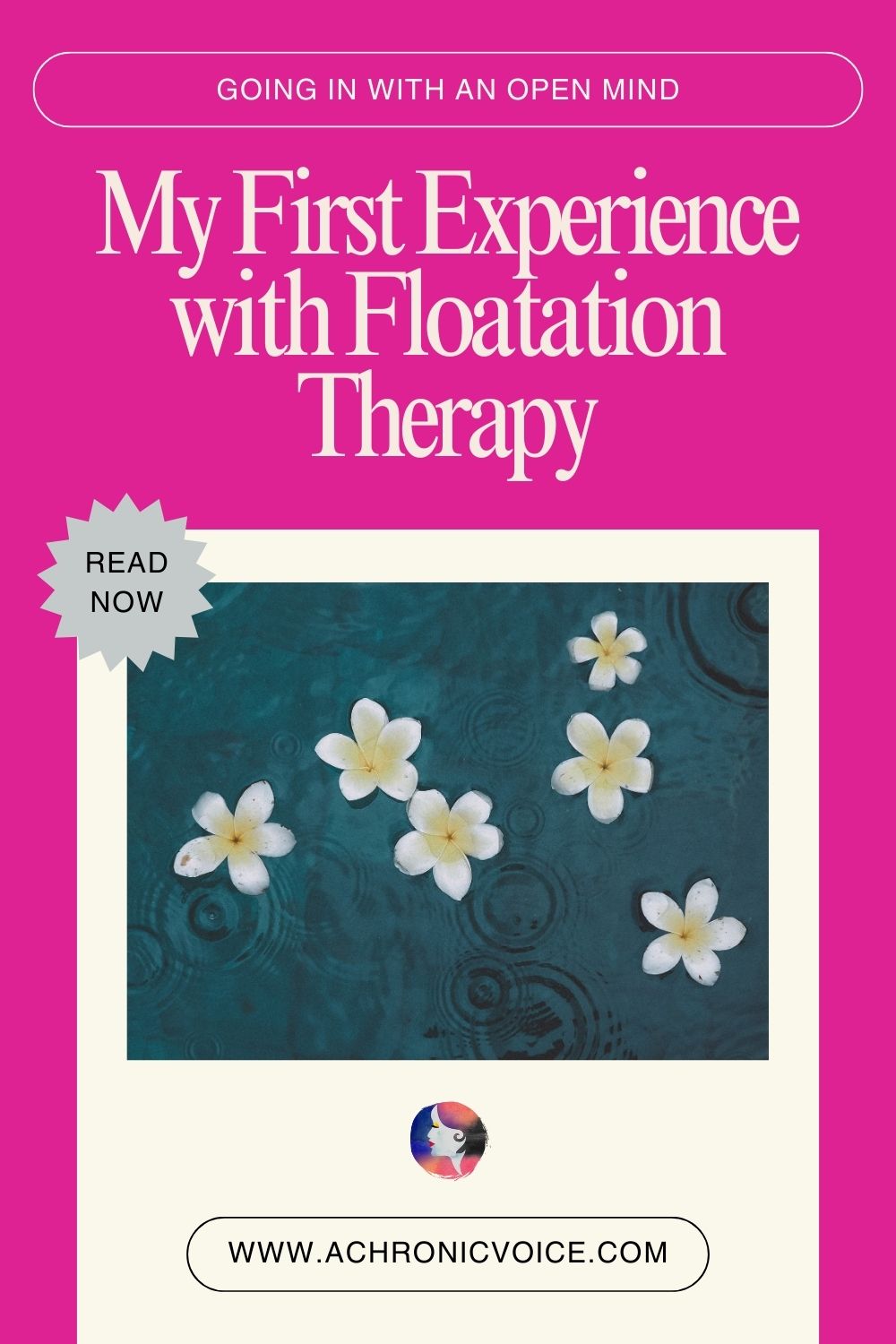
Palm Avenue Float Club has Ceased Operations for Floatation Therapy
I’ll be focusing more on my personal experience with floatation therapy, as well as how it did or didn’t help with my own chronic pain in this review. The photos are from the original review of Palm Avenue Float Club (PAFC) in Singapore and are more for memory's sake, as they have officially ceased operations.
They have now rebranded as “Nowhere Baths”, which offers other services instead, including: hot pools, cold plunges, sauna, steam room and a lounge.
What Exactly is Floatation Therapy?
Believe it or not, floatation therapy began as a scientific lab experiment by John C. Lilly, an American neuroscientist and physician, in 1954. It started out as a study on what the brain needs to remain conscious. Conducted using R.E.S.T. (Restricted Environmental Stimulation Therapy) - or sensory deprivation - it works by shutting down stimuli to your brain (Wikipedia contributors, 2025).
Lashgari et al. (2025) conducted a systematic review of R.E.S.T. and found that it supposedly has a positive impact on pain management, as well as "athletic performance, stress, mental well-being, and clinical anxiety".
And as those with chronic illness know full well, stress is a huge trigger for chronic pain and flare ups of their conditions. This then causes more stress, and the vicious cycle goes into a buggy loop.
This interesting article on Time (Oaklander, n.d.) explores the science behind floatation therapy, as researchers monitor the brains of participants via MRI. Harding, a soldier who suffers from PTSD (post traumatic stress disorder), also shares his experiences in it.
Is Floatation Therapy Just a New Hipster/Alternative Fad?
This was also one of the first thoughts I had! As you can see from above, it’s been around since the 1950s, so it isn’t anything new. The design of the tanks and solution used has evolved over the years for maximum benefit and comfort (they had to wear oxygen masks in the beginning!).
Now there is approximately 500 kg of epsom salt/magnesium sulphate in each tank, depending on the float centre you visit, and the guidelines of your state/country (Department of Health (Western Australia), 2015). So it’s kind of like floating in the dead sea, where you remain buoyant.
Oh, and the only other person who was there for a float that day was a lady in her late fifties or sixties, looking fabulous in bright red lipstick! So it's definitely suitable for the elderly as well 😉
Palm Avenue Float Club Outlet at Kampong Bugis Previously


I love spaces that are bright, warm and flooded with sunlight. PAFC's outlet at Kampong Bugis was gorgeous in that sense! Even without floating, the environment was relaxing in itself. There are fragrant, grain-filled seats that you can lounge upon, with books on art and floatation within arm's reach. A pity they had to shut down 😔
Preparations for Chronic Illness Beforehand
Excitement filled me before my floatation therapy session, and I was banking on it to relieve some of the aches in my body. This is exactly – as I learned later – how you should not approach it. Instead, you should enter with no expectations at all.
I have epilepsy, so I had to acquire my neurologist's approval beforehand. He gave me the green light as my condition was well-controlled. Those with hypertension, skin problems or schizophrenia are usually not permitted to float. If you have any medical condition, do check with your doctor before trying floatation therapy (or any other alternative or complementary therapy, really).
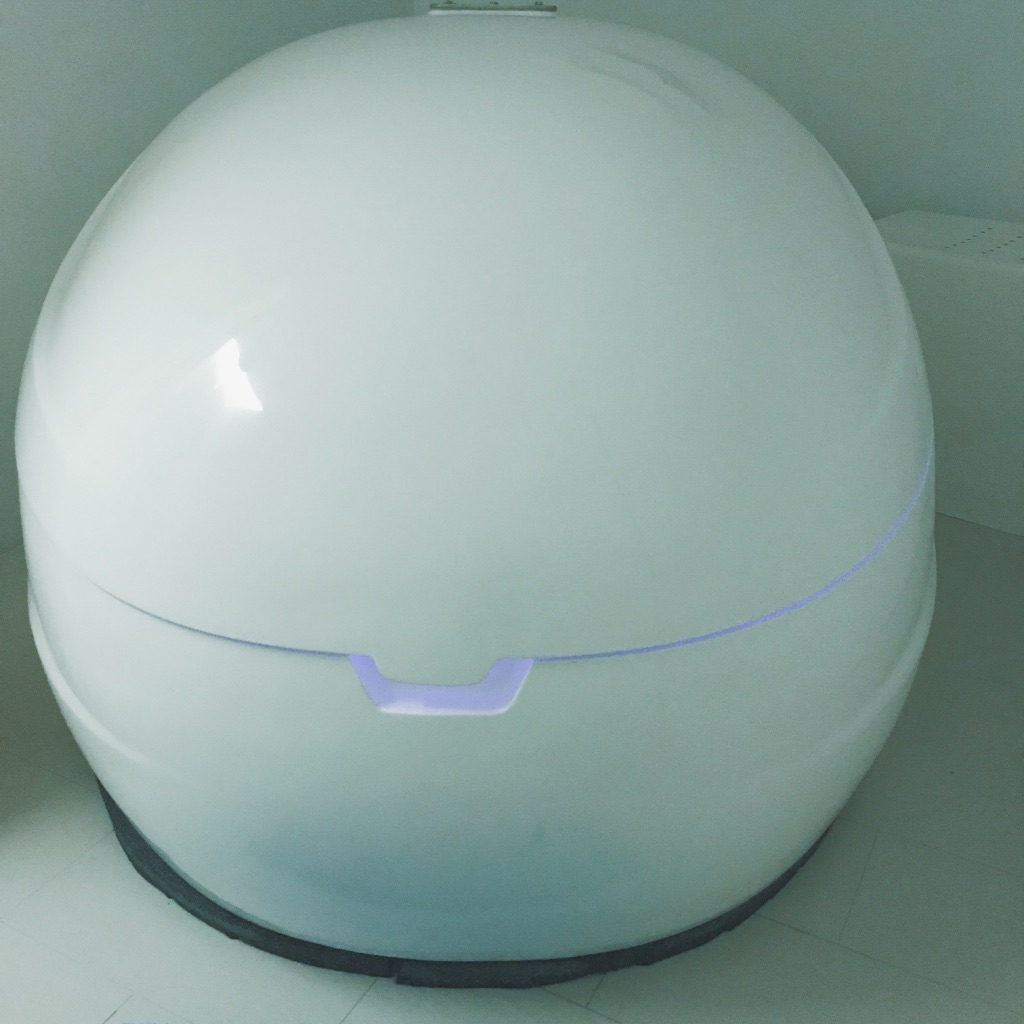

Getting Ready to Enter the Floatation Tank!
The first thing I noticed was that the liquid soap and shampoo smelled like a spa. The water in the shower was nice and hot, and I emerged smelling like fresh lemons, with a hint of vanilla or cocoa butter. There is a pair of disposable earplugs and neck rest provided for those who need them.
I was impatient to enter the pod! I loved the fading neon lights, but hit the 'lights out' button after closing myself in. There is nothing else in the floatation tank except for a spray bottle of fresh water, for clearing away accidental salt on your face. There's also an emergency button inside, which you can press should you feel unwell or need to call for help.
Initial Thoughts and Sensations Whilst Floating
The first thing I noticed was how silky the water felt over my skin. I glided my hands all over my body (ahem), marvelling at how nice and smooth it felt. Epsom salts help to moisturise your skin, and I exited the pod later on without so much as a wrinkle on my fingers.
I tried to sink myself (what else do you do with an hour and nowhere else to go?). Whilst it didn't take much effort to put my foot down, I floated up like a buoy upon release. I tried floating face down, and found it a comfortable position, too. But you can't remain that way the whole time, without straining to keep your neck out of the salty water.
I tried placing my hands in various positions to see which felt the most comfortable. I clasped them behind my head, placed them by my side, and on my stomach. I found my favourite position (behind my head), and proceeded to drift off.
Others have said that the pod is big enough to float in comfort, so I must be greedy as I kept wishing that it was bigger. My hands and legs kept drifting apart in the shape of a giant starfish, but the boundaries kept pushing me back.
Letting Go is Never Easy for Me
The weightless sensation that people purported to like felt disorienting and disturbing to me. After several traumatic hospital experiences where I lost control of my body, I've had issues with letting go.
I also felt a little nauseous from the mild bobbing. A general browse on the internet said that those under extreme stress might feel that way. I'm not sure what exactly I'm stressed about; perhaps chronic illnesses take a toll in and of themselves. My daily medication (over)load probably doesn't help either.
Jean, the float crew who was there that day, told me that it was okay to pull my shoulders back to allow my chest to open up. I found this uncomfortable, because my posture is horrendous. It was a stark but good reminder of the need to correct it, and I found it beneficial to remain in that position for an hour.
Fiddling About, Waiting to be ‘Zen’
I took my earplugs out after a while, just to see if I preferred that. I liked that I was more aware of noises, such as people walking by in the corridor, and the sound of my heart beating.
Now this is something you don't quite hear about floatation therapy, but some of the salt got stuck in my ear for days after. I was a little worried due to my weak immune system, and rubbed my ear until it was sore. Some ear drops from the pharmacy fixed that 🙂
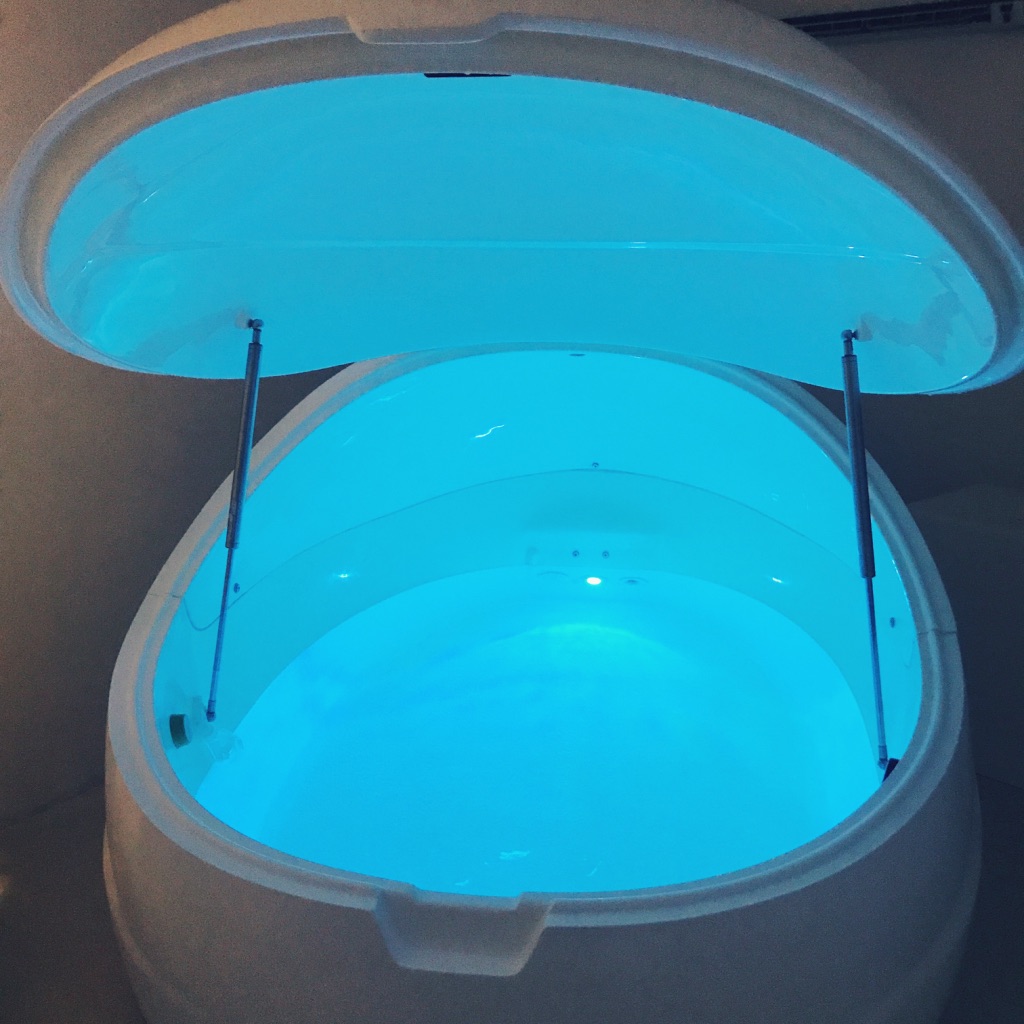

As Time Went On Inside the Floatation Tank
After the peaceful music had faded away, my mind kept wandering off, as I wondered about what to think about for a whole hour. The ironic thing was, I couldn't wait to get out after only 5 minutes, when I had wanted to try this for ages!
This is a behaviour I need to unlearn - I never live in the present moment and thus, never fully enjoy my life. I read that you start to relax after 15 minutes or so, but I took longer than that. I drifted off to a trance-like state after 30 - 40 minutes. I was asleep, yet my mind kept repeating my schedule for the next day.
Reaching the Theta State of Awareness
There are three brain wave patterns that occur during sleep. It cycles from:
- alpha, where you are drowsy yet easily jolted back awake, to
- theta, where you are relaxed and subconscious, to
- delta, where you are deep in slumber (Hillier, 2023).
My psychiatrist tried to describe hypnotherapy to me once, and it dawned on me that this must be the state she was talking about. I did some research when I got home, and learned that this is to do with an increase in “theta oscillations” in the brain (Jensen et al., 2015).
Theta waves are the slowest brain waves that is “characterized by deep, dreamless sleep”, a bit like daydreaming. This state of mind is also associated with an increase in creativity and memory retention, deep meditative states and intense emotional experiences (Cornett-Murtada, 2009).
I also like how Cornett-Murtada (2009) describes it colloquially:
“Occasionally I call this the “cat brainwave,” because I believe this is the state in which many felines spend most of their time, either dozing while half-awake or vividly dreaming.
How Floatation Therapy Helps to Slow Brain Waves Down
Floatation therapy apparently makes this process of accessing this state of mind easier, because all you have to do to arrive at this state, is to give it enough time.
"Floating has given me hope that a whole chunk of our population that normally would never be able to meditate could now achieve those sorts of deep meditative states,” Feinstein says (Oaklander, n.d.).

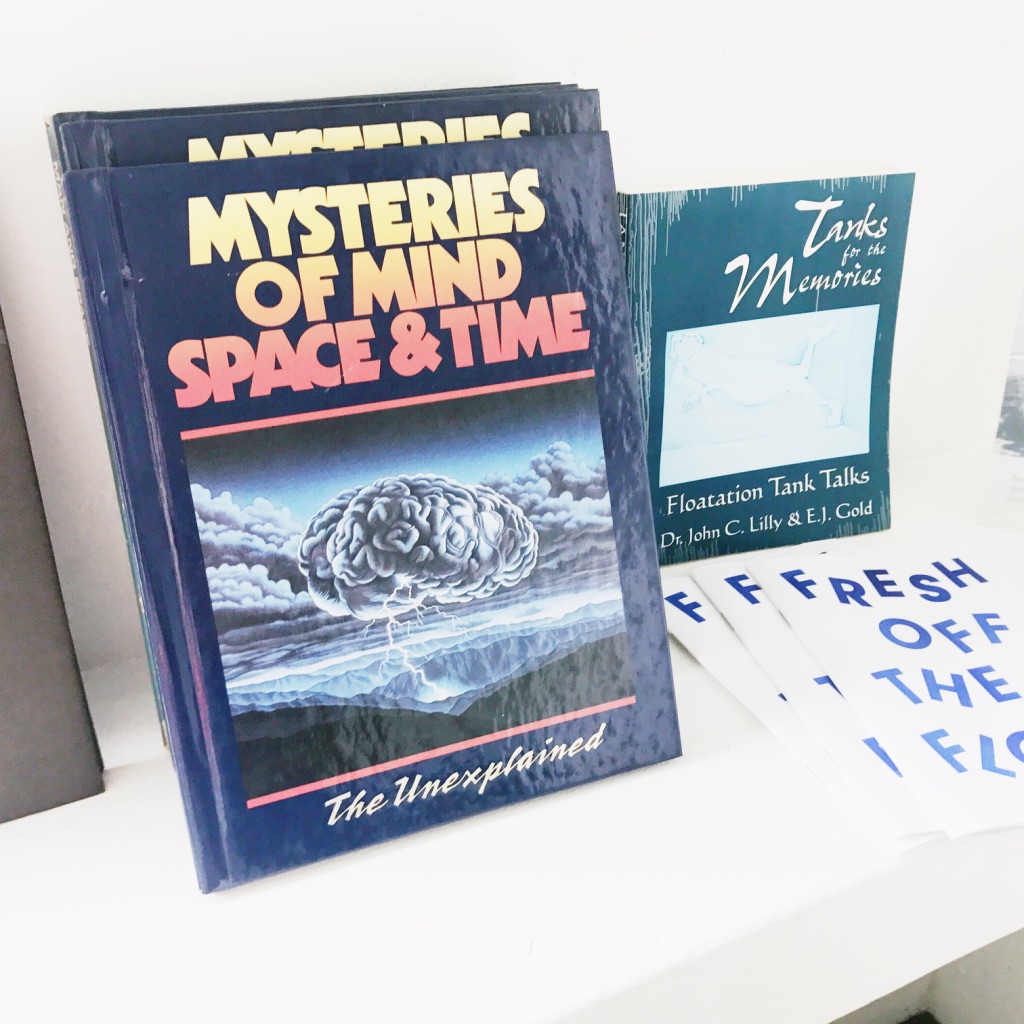
Tail End of the Floatation Therapy Session
The music came on again too soon. I hadn’t realised that I had actually fallen asleep! I got out and took another refreshing shower, before hopping back out to the bright space for some tea. So... how did the flotation session make me feel?
To be honest, disappointed. To be fair, I have defective cognitive thoughts which include 'magical thinking' (Madeson, 2025). I was somehow hoping that my full-body aches from Sjögren's disease would disappear, but they remained.
The Most Calm I've Felt in Ages
What did happen was that I came out feeling very relaxed, and free from any stress! My breathing was deep, calm and easy. I felt serene and clear-headed, as if my depression and anxiety had fallen asleep.
It was amazing how I felt so rested, as I had forgotten how that was like - I haven't felt like this in years. It felt better than a full night of sleep! This state of calm correlates with a systematic review which found that floatation therapy had beneficial effects on sleep and relaxation, although further studies need to be done (Kjellgren et al., 2020).
It's a unique experience that I can't really compare to anything else. Whilst a massage is also relaxing, floatation therapy expands beyond the body. A yin yoga class is the closest I can associate it to, but with longer lasting and deeper effects, at least for me. I became more aware of the little things around me, such as the chirping of birds and the breeze on my face.
Back at Home, Post Floatation Therapy
Guess what happened when I got home? I took a 2 hour nap, as if an hour of floating wasn't enough! But I felt way too relaxed and blissful, and couldn't keep my eyes open. The feeling of calm lasted even after I woke, and gave me the boost I needed for an event I had in the evening. (Usually I'm exhausted and achy by dinner time, so that was nice!)
Pin to Your Alternative Therapy, Health & Wellness Boards:
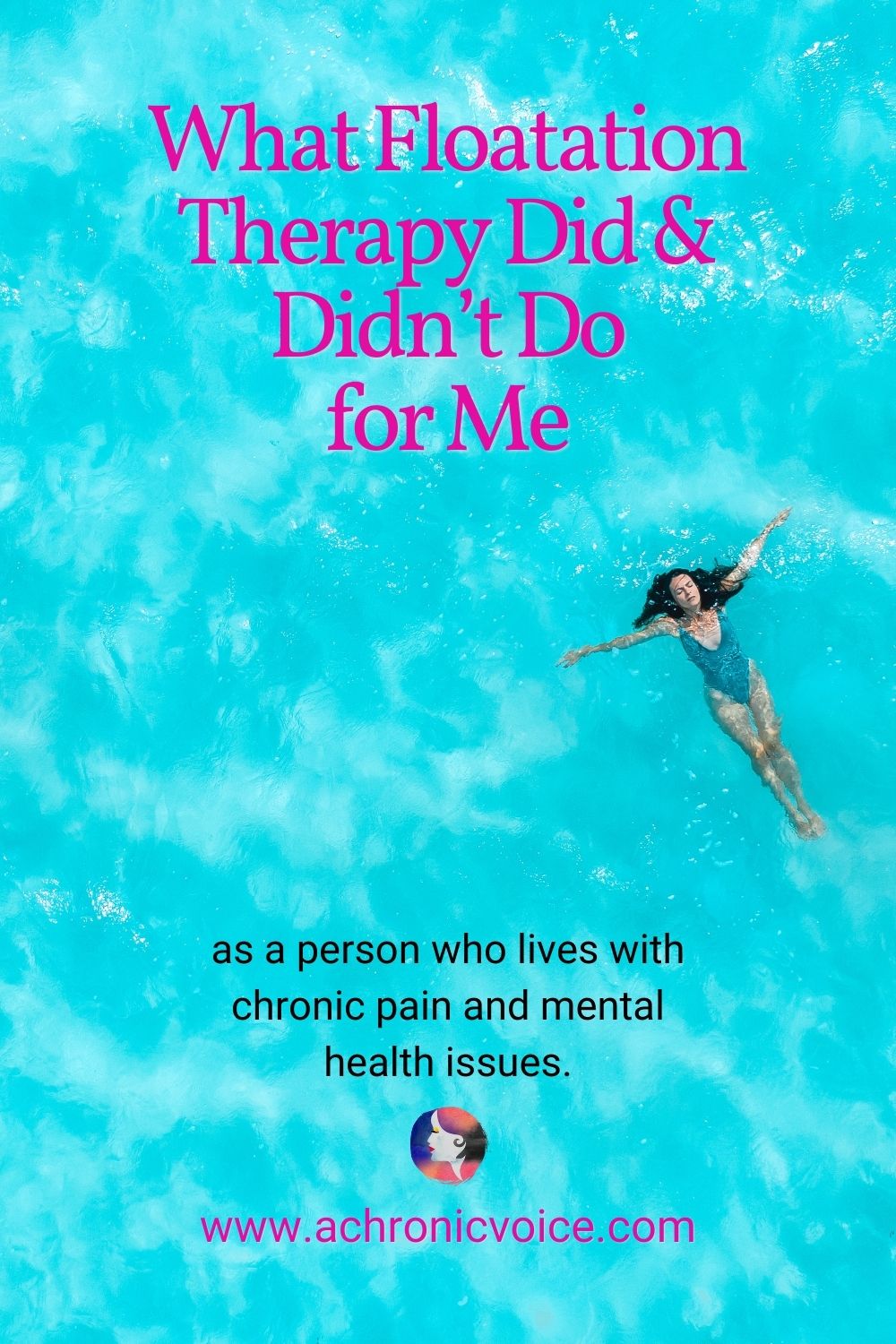
Would I Do It Again?
I've only tried floatation therapy once, and would like to give it a few more attempts before concluding. Your body apparently takes about three floats before it gets used to the sensation, and learns how to relax.
As someone with chronic illnesses, I am always on the lookout for complementary therapies that are simple and non-invasive. Because if they help, the pros far outweigh the cons. It would be a dream come true just to be in less pain every day; an energy boost would be a bonus!
SGD90 for a 60 minute float seems pricey to me, as massages are also relaxing and are much cheaper. A three session package reduces the price to $75 per float, so I will be trying this out. I've already gone for my second float at Palm Avenue's Waringin Outlet, and am liking it so far.
Pin to Your Floatation Therapy & Pain Management Boards:
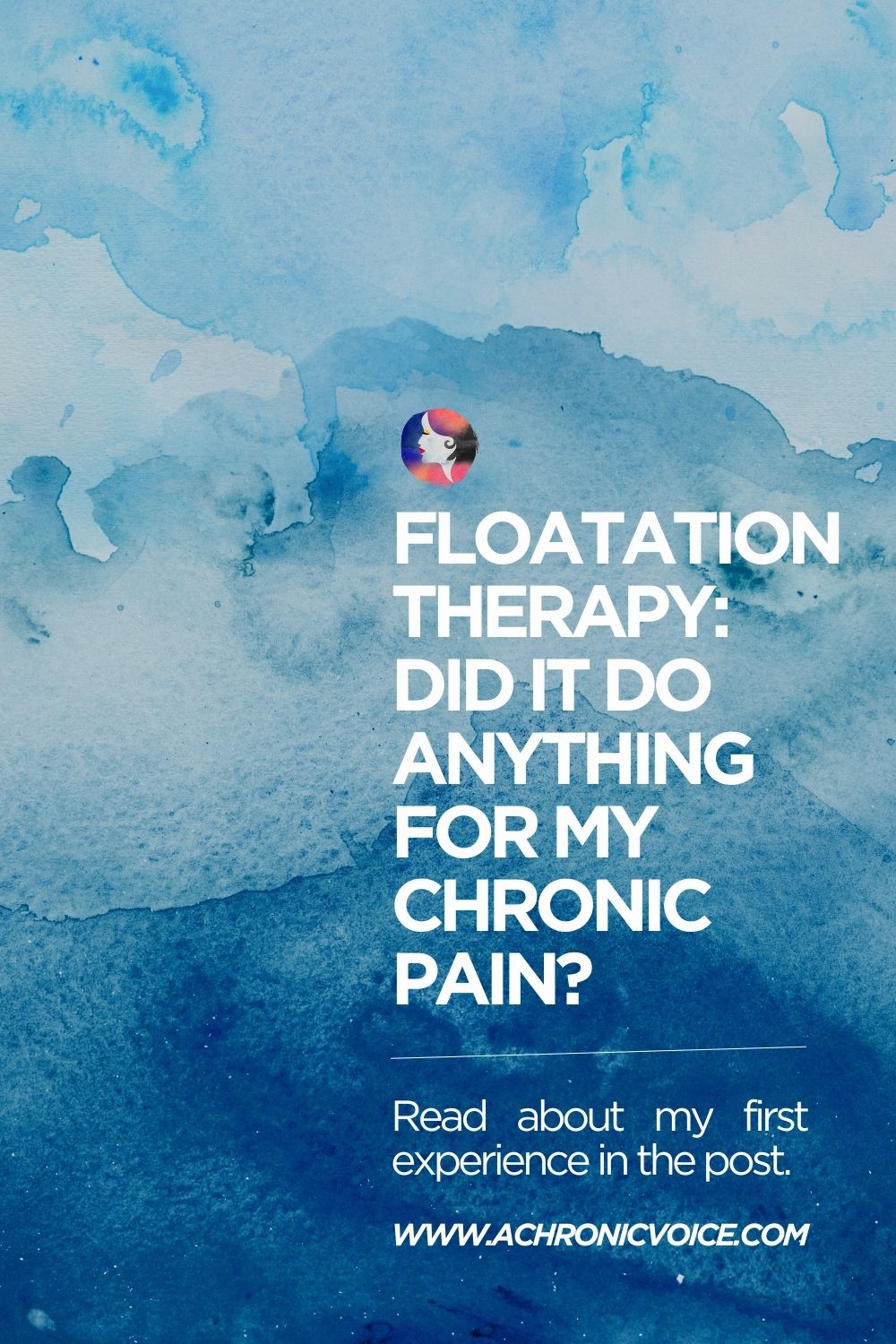
- Cornett-Murtada, V. (2009). From beta to theta: Human consciousness, hypnosis and music performance. College Music Symposium, 49/50, 265–270. https://www.jstor.org/stable/41225252
- Department of Health (Western Australia). (2015). Guidelines for floatation tank installation, operation, monitoring and risk management [PDF]. https://www.health.wa.gov.au/~/media/Files/Corporate/general-documents/water/PDF/Guidelines-for-Float-Tanks.pdf
- Hillier, S. (2023, December 22). Alpha, beta, theta: What are brain states and brain waves? And can we control them? The Conversation. http://theconversation.com/alpha-beta-theta-what-are-brain-states-and-brain-waves-and-can-we-control-them-219236
- Jensen, M. P., Adachi, T., & Hakimian, S. (2015). Brain oscillations, hypnosis, and hypnotizability. American Journal of Clinical Hypnosis, 57(3), 230–253. https://doi.org/10.1080/00029157.2014.976786
- Kjellgren, A., Norell-Clarke, A., Jonsson, K., & Tillfors, M. (2020). Does flotation-rest (restricted environmental stimulation technique) have an effect on sleep? European Journal of Integrative Medicine, 33, 101047. https://doi.org/10.1016/j.eujim.2019.101047
- Lashgari, E., Chen, E., Gregory, J., & Maoz, U. (2025). A systematic review of flotation-restricted environmental stimulation therapy (REST). BMC Complementary Medicine and Therapies, 25(1), 230. https://doi.org/10.1186/s12906-025-04973-0
- Madeson, M. (2025, February 25). Cognitive distortions: 15 examples & worksheets (pdf). PositivePsychology.Com. https://positivepsychology.com/cognitive-distortions/
- Oaklander, M. (n.d.). Mental health treatment: How float clinics treat anxiety. Time. Retrieved August 22, 2025, from https://time.com/floating/
- Wikipedia. (2025). John C. Lilly (Version 1303371650) [Wikipedia article]. In Wikipedia. Retrieved August 22, 2025, https://en.wikipedia.org/w/index.php?title=John_C._Lilly&oldid=1303371650
- Wolfe, F., Petri, M., Alarcón, G. S., Goldman, J., Chakravarty, E. F., Katz, R. S., & Karlson, E. W. (2009). Fibromyalgia, systemic lupus erythematosus (SLE), and evaluation of SLE activity. The Journal of Rheumatology, 36(1), 82–88. https://doi.org/10.3899/jrheum.080212



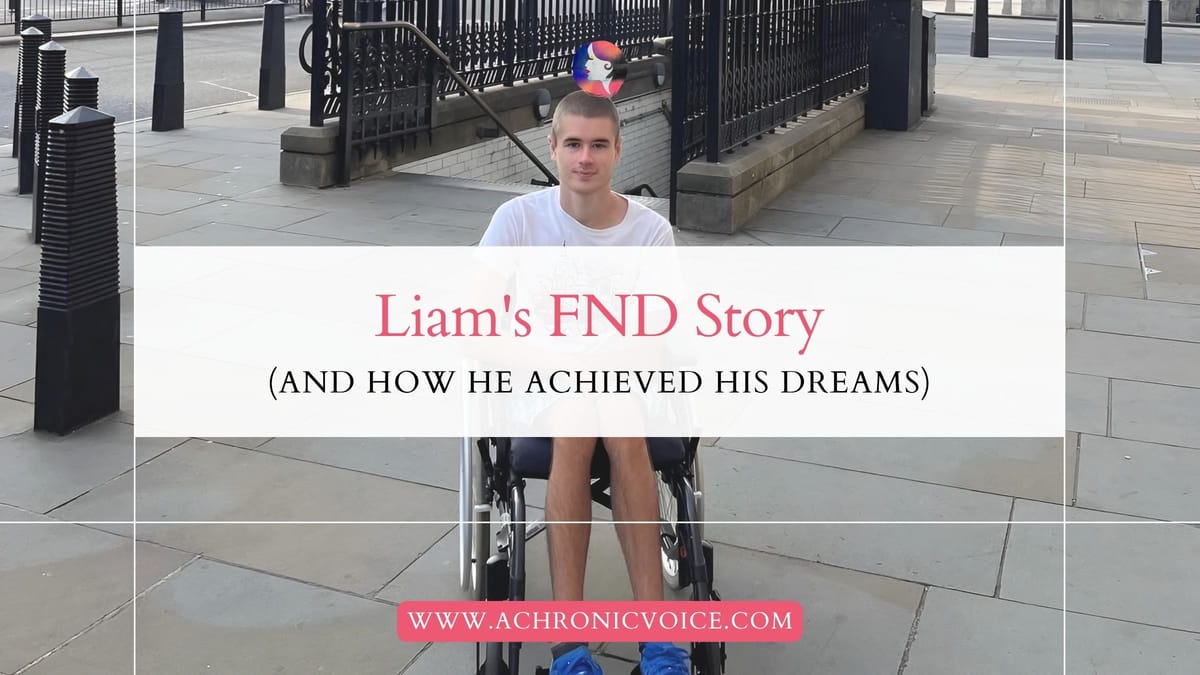


Comments Archives:
Comments imported from previous WordPress site.-
Carrie Kellenberger
-
Sheryl Chan
-
Carrie Kellenberger
-
Chronic Mom
-
Sheryl Chan
Start a new conversation in the Member Comments below!I was surprised to see that you don’t have many comments on this post. Glad I can add to it. First of all, I’m so glad you pointed out that most bloggers who have written about this are caucasian women with fibromyalgia. We don’t hear from anywhere near enough Asian bloggers and I think that’s a huge gap. I’ve noticed it for years, but just chalked it up to me being here in a sea of Chinese.
I was also offered a free floating session and had the same feelings as you about it. I DO NOT like being in enclosed spaces, but I felt good afterwards. My husband ended up buying a Japanese style bathtub for me and I buy 50 pound bags of Epsom Salts and Magnesium Chloride Flakes so I can ‘float’ three times a week at home. It’s worth the investment and I don’t have to go anywhere. It’s, by far, the best relief treatment I can give myself. Plus home spa! Reading while floating. My skin is great and it helps with sleep. So I’m fine with skipping the $90 price tag and all for saving myself trips out of the house when I can do it here, even if it is a bit ghetto compared to those fancy float pods!
Hi Carrie, haha my posts tend to not get heaps of comments in general perhaps! 😀 And it’s true…I love that you have been based in Taiwan for so long because there aren’t that many bloggers online I can talk to in regards to chronic illness and cultural stuff.
I love that you have a bathtub and DIY it! Whilst the amount of salt isn’t as much as a flotation pod, I bet it’s enough to relieve you of some pain and stress! I don’t have a bathtub unfortunately. But would love to go for a float again sometime soon! I had a bit of a scare the last time as I slipped after the shower there and bruised my back (with a blood clotting disorder that’s always scary)…haven’t been back since but I just need to be more careful haha.
When we moved, we made sure to find a place with a proper tub, so now we enjoy a hot spring style bathtub in our new home and the weather is finally cool enough to enjoy it. But I’m terrified of the stone steps going into it and out. Yes, it’s so scary when you slip!
I agree, it’s great to be able to talk to someone else here who gets it! Approaching 20 years in Asia. Feels very weird!
I’ve always wondered if this worked. I love how I feel when I’m floating in the pool, so I thought it might be helpful for me. It does look incredibly relaxing!
Hi Shelley, it’s a very different experience from floating in a pool but still very relaxing, maybe even more so! Let me know what you feel and think about it if you do try it out!